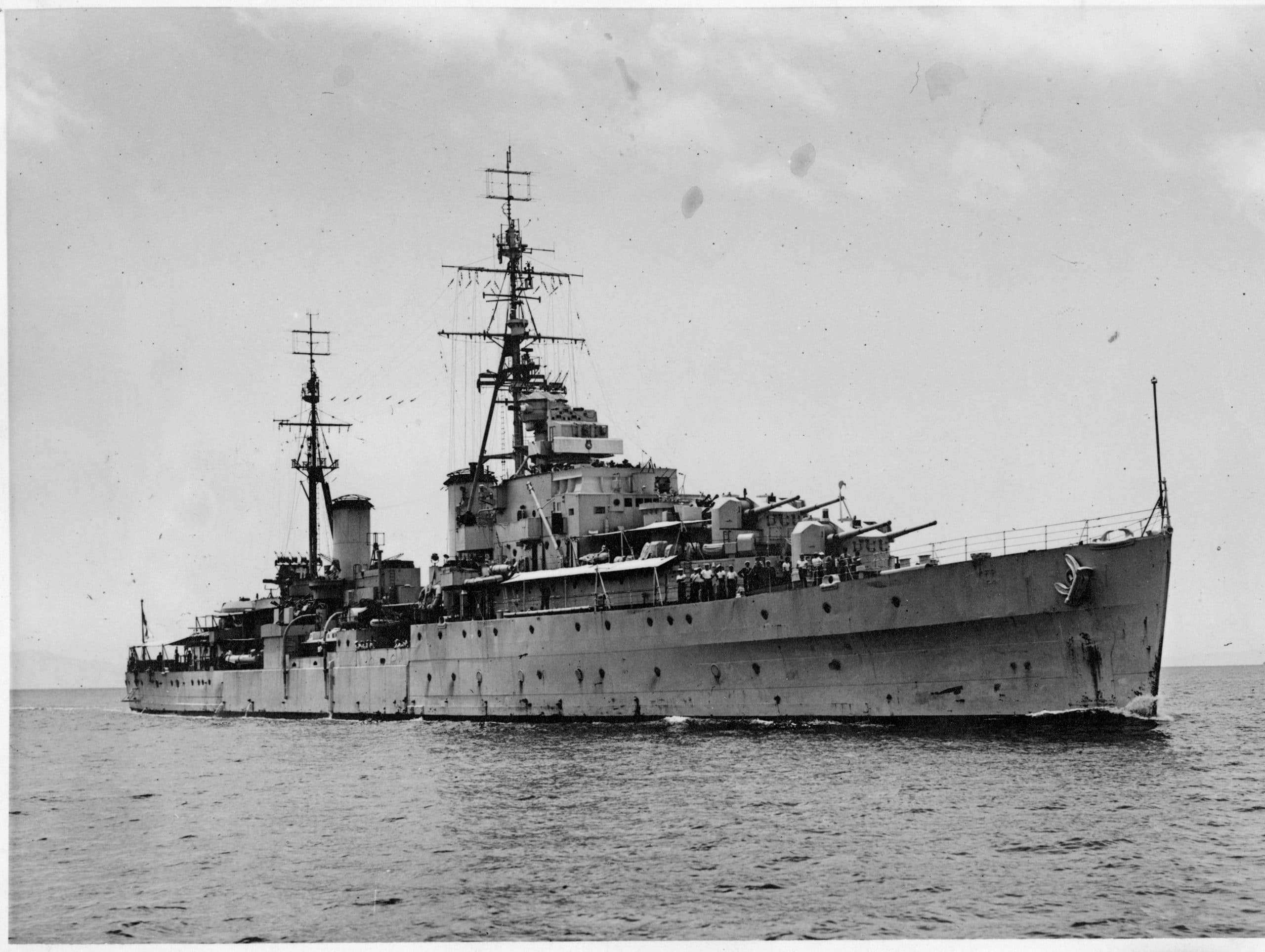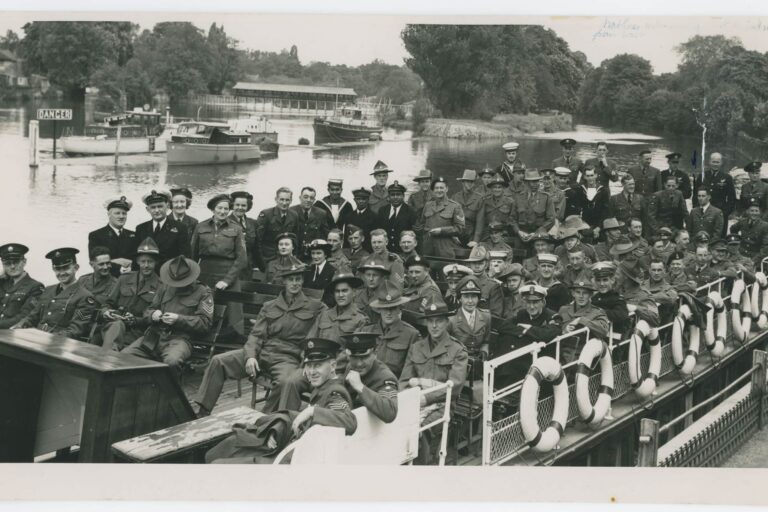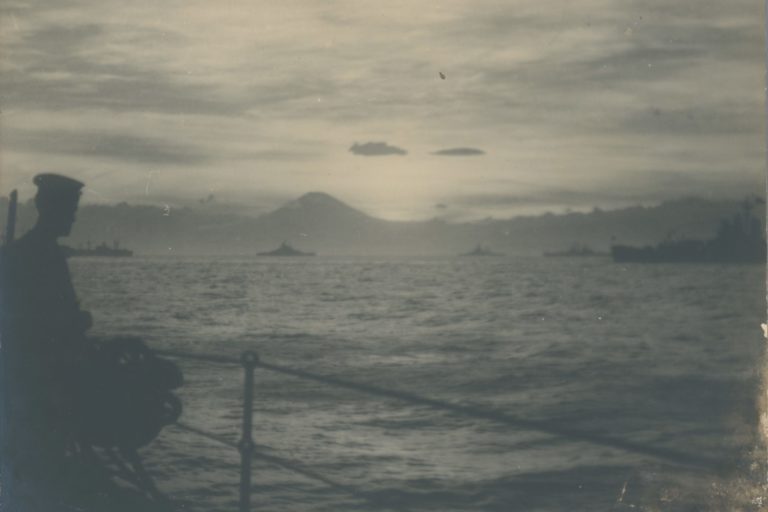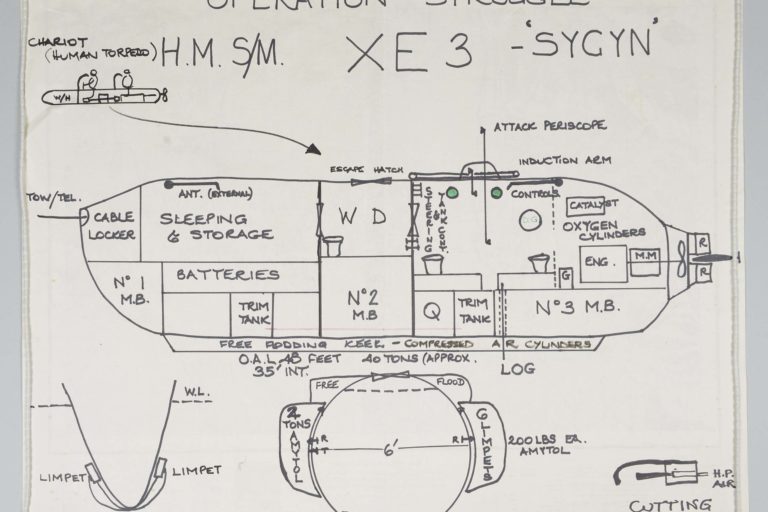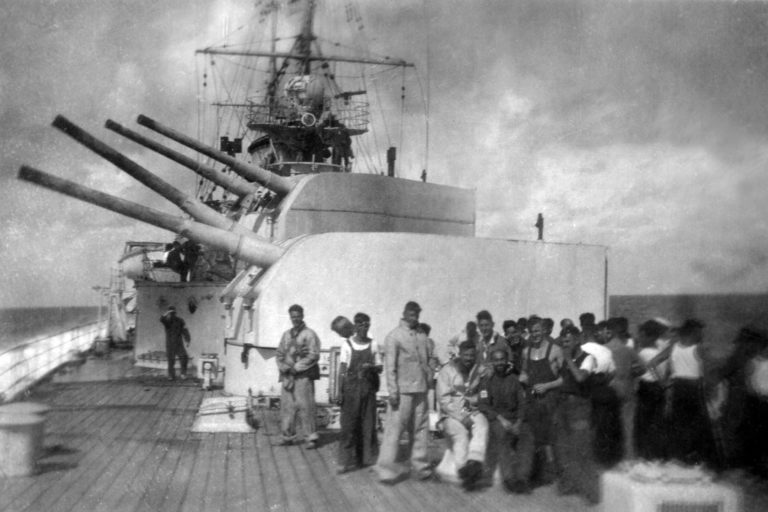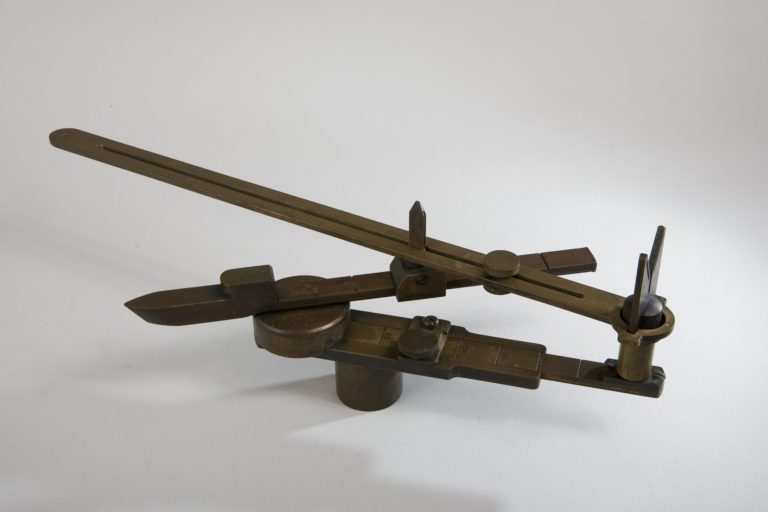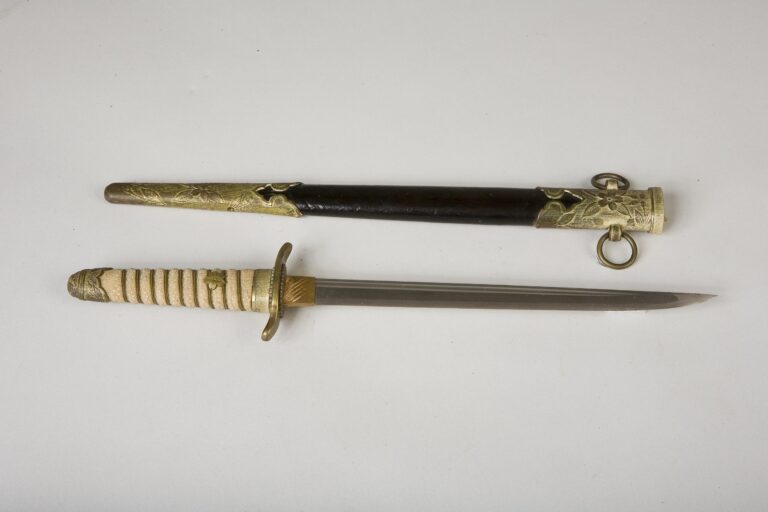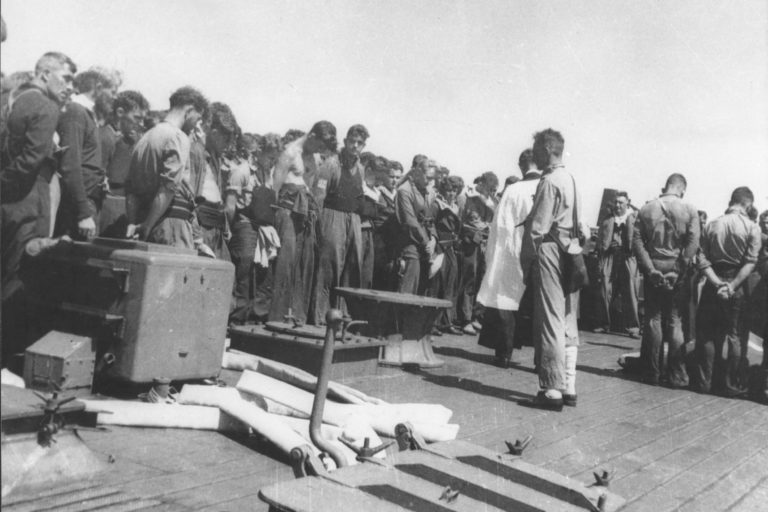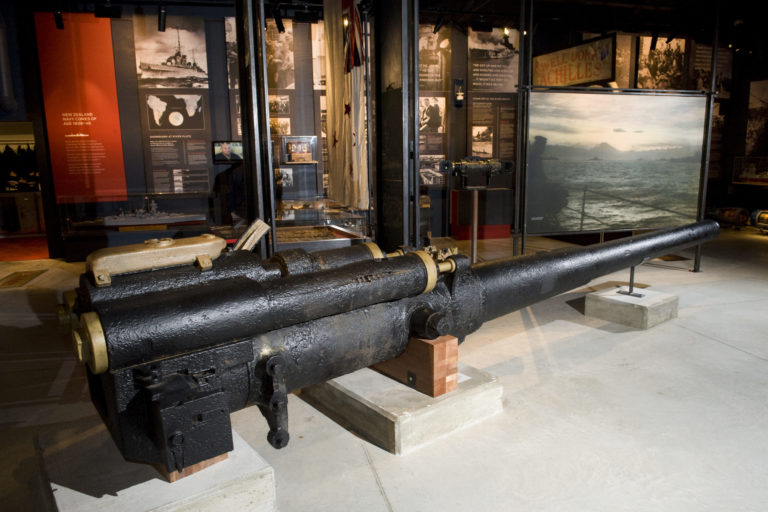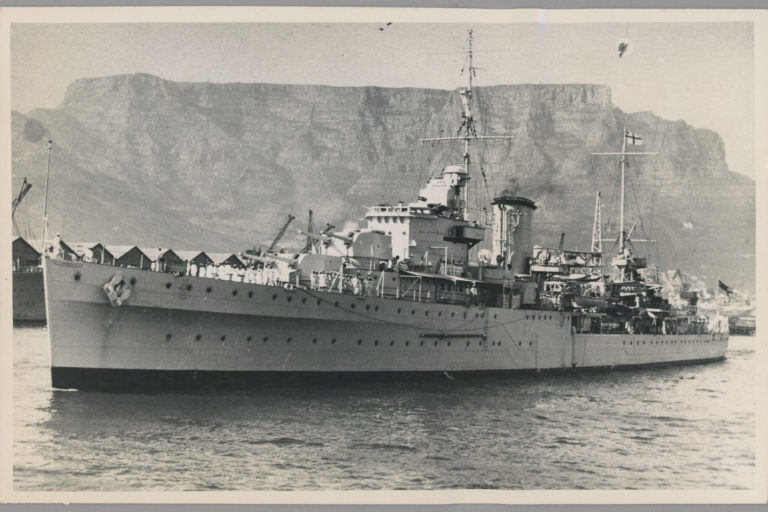A steel-hulled ship is like a huge floating magnet with a large magnetic field surrounding it.
As the ship moves through the water, this field also moves and adds to or subtracts from the Earth’s magnetic field.
Because of its distortion effects on the Earth’s magnetic field, the ship can act as a trigger device for magnetic sensitive ordnance or devices which are designed to detect these distortions.
Degaussing is a process in which systems of electrical cables are installed around the circumference of ship’s hull, running from bow to stern on both sides.
A measured electrical current is passed through these cables to cancel out the ship’s magnetic field. It could be said that degaussing, correctly done, makes a ship “invisible” to the sensors of magnetic mines, but the ship remains visible to the human eye, radar, and underwater listening devices.
The degaussing system is installed aboard ship to reduce the ship’s effect on the Earth’s magnetic field.
In order to accomplish this, the change in the Earth’s field about the ship’s hull is “cancelled” by controlling the electric current flowing through degaussing coils wound in specific locations within the hull.
This, in turn, reduces the possibility of detection by these magnetic sensitive ordnance or devices.
The ship’s permanent magnetization is the source of the ship’s permanent magnetic field.
The process of building a ship in the Earth’s magnetic field develops a certain amount of permanent magnetism in the ship. The ship’s induced magnetization depends on the strength of the Earth’s magnetic field and on the heading of the ship with respect to the inducing (Earth’s) field.
There are several different types of degaussing systems in the fleet today.
The basic differences between them can be characterized as to what type of power supply they use, and what type of control circuitry they use.
For example, some units use silicon-controlled rectifier solid-state power supplies (as in the SSM system). Other systems use motor generator sets (as in the RM-5 type systems), and still others use a mixture of the two (as in the GM-1A units).
The Main coil (M) compensates the induced and permanent vertical components of the ship’s magnetic field (Z zone). It is installed in the horizontal plane at the waterline. As the ship changes hemispheres the coil current polarity must be manually adjusted.
The Forecastle permanent – Quarterdeck permanent coils (FP-QP) compensate for the longitudinal permanent component of the ship’s magnetic field.
The FP coil encircles approximately the forward 1/3 of the ship in the horizontal plane at the main deck. QP coil encircles approximately the after 1/3 of the ship in the horizontal plane at the quarterdeck.
Any coil current changes require manual adjustment. The Forecastle induced – Quarterdeck induced coils (FI-QI) are located in the same area as the FP-QP coils, they compensate for the longitudinal induced component of the ship’s magnetic field.
The FI-QI current is proportional to the horizontal component of the Earth’s magnetic field along the ship’s longitudinal axis. The FI-QI coil current is manually changed, by shifting the “H zone” switch on the switchboard, when the ship’s location changes H zones.
The degaussing system automatically compensates for heading changes by converting a gyro input signal to a magnetic heading.
The Athwartship coil (A) is installed in the vertical plane and extends from the keel to the main deck. It compensates the athwartship induced and athwartship’s permanent components of the ship’s magnetic field. The A coil current consists of permanent and induced components.
Development of Degaussing
During the American Civil War, “torpedoes” – now known as “mines” became a weapon used by the Confederates to thwart the more powerful Union Navy.
Such mines could be detonated through contact or, in time, by electric impulse, usually triggered from a shore post. In later wars, the sea mine might be fused with “horns”.
Horns were made of soft metal such as lead and held a glass ampoule containing battery acid, usually potassium-bichromate.
The lower end of the horn contained an electric battery minus the electrolyte. Contact with the horn broke open the acid container, energizing the battery which then heated a platinum wire in a mercury fulminate detonator, thus exploding the mine.
At the start of WWII, the Germans developed a new magnetic trigger for mines, one based on the mine’s sensitivity to the magnetic field of a ship passing nearby.
The British experienced a stroke of luck in November 1939. A German mine was dropped from an aircraft onto the mud flats of the Thames estuary during low tide.
As if this was not sufficiently good fortune, the land belonged to the army, and a base with men and workshops was at hand.
Experts were dispatched from London to investigate the mine. They had some idea that the mines used magnetic sensors, so everyone removed all metal, including their buttons, and made tools out of non-magnetic brass.
They disarmed the mine and rushed it to labs at Portsmouth, where scientists discovered a new type of arming mechanism.
The mechanism had a sensitivity level that could be set, and the units of the scale were in milligauss.
Gauss is a measurement for the strength of a magnetic field, demonstrating how it went off before coming into contact with the ship.
Using the detector from the mine, they were able to study the effect of a ship passing near it. A ship or large ferrous object passing through the earth’s magnetic field will concentrate the field at that point.
The mine’s detector was designed to go off at the mid-point of the ship passing overhead.
The effort to defeat these magnetic mines took several forms. One such approach was to attempt to negate the magnetic signatures of metal ships through a process known as “degaussing,” as described here:
A steel-hulled ship is like a huge floating magnet with a large magnetic field surrounding it. As the ship moves through the water, this field also moves and adds to or subtracts from the Earth’s magnetic field. Because of its distortion effects on the Earth’s magnetic field, the ship can act as a trigger device for magnetic sensitive ordnance or devices which are designed to detect these distortions. The degaussing system is installed aboard ship to reduce the ship’s effect on the Earth’s magnetic field. In order to accomplish this, the change in the Earth’s field about the ship’s hull is “cancelled” by controlling the electric current flowing through degaussing coils wound in specific locations within the hull. This, in turn, reduces the possibility of detection by these magnetic sensitive ordnance or devices. Modern warships have built-in degaussing systems. The degaussing system aboard a naval vessel consists of coils of electrical cable in different locations within the hull, a direct power source for energizing the coils and a controlling system, via switchboards, to control the amount and polarity of current through the coils.
The purpose of degaussing is to counteract the ship’s magnetic field and establish a condition such that the magnetic field near the ship is, as nearly as possible, just the same as if the ship were not there. This in turn reduces the possibility of detonation of these magnetic-sensitive ordnances or devices.
But when the “magnetic influence” mines were discovered, neither warships nor vital cargo vessels were so equipped. Degaussing of these ships was accomplished in some cases for such ships when: “Thick bands of electrical wire, aligned with the main deck, were fastened around the length of the vessel. The wire was energized with an electric current that neutralized the ship’s magnetism.
Another technique was to “wipe” the hulls of ships.
It was found that ‘wiping’ a current-carrying cable up and down a ship’ hull temporarily cancelled the ships’ magnetic signature sufficiently to nullify the threat. This started in late 1939, and by 1940 merchant vessels and the smaller British warships were largely immune for the few months at a time until they once again built up a field. Many of the boats that sailed to Dunkirk were degaussed in a marathon four day effort by degaussing stations
How could the ships natural magnetism be determined? This was done by setting up a number of magnetometers (devices for measuring the strength of a magnetic field) in a line about 400 ft. long with the magnetometers 30 ft below the water about 15 feet apart.
These magnetometers were connected to leads which ran to a “house” on the shore which contained a fluxmeter for each magnetometer beneath the water.
Each magnetometer would send its reading to its fluxmeter in the range house which would record its reading on a moving tape.
The readings from all of the fluxmeters would be combined into one reading which was called the ship’s “signature”. From this signature we could determine what action to take to reduce the effective magnetism to as low a condition as possible.
This could be done by adding turns or decreasing the number of turns in the degaussing cable that went just inside the skin of the ship.
The same effect could be accomplished by raising or lowering the current flowing through the turns. An officer from the “degaussing station” would board the ship. The ship would run the range.
The recommendation would be signalled to the ship and the officer on board would make the necessary adjustments, and then the ship would run the range again to see if further adjustments needed to be made.
The second method for demagnetizing ships was called “Deperming”.
This method was used always for submarines. In this method no cables were placed inside the skin of the ship.
Degaussing cables are large and go through all the bulkheads of the ship. This would weaken the integrity of the submarine to withstand great pressures and depth charge attacks.
In “Deperming” we used the-same method that a jeweller uses to demagnetize a watch. I called my friend, Ross Maddox, a retired jeweller, and asked him about demagnetizing watches.
He said that he used a coil which he plugged in to a 110 volt outlet. He would slowly move the watch into the coil and then withdraw it slowly.
He had a magnetic compass that he checked the watch to see if the compass would be deflected by bringing the watch close to it. Sometimes he had to place the watch back in the coil and repeat the process before the watch would not cause the compass needle to move.
The trick for Deperming submarines was to get a coil large enough and a way of putting the submarine into the coil and back out again in an easy fashion.
This work also describes the effort to make “Deperming” portable during WWII:
About this time the higher ups decided that it would be wise to train a group of four officers and thirty enlisted men into a unit that could “deperm” submarines using portable equipment that could be deployed in any harbor and not confined to any one specific place such as Pier 33 in San Francisco Bay. As submarines required Deperming about every six months, such a unit could be located in the South Pacific and move northward as the war proceeded against Japan. This could make the submarine fleet much more effective by not having to come to San Francisco or Pearl Harbor, or down to Australia to be depermed.
The Navy also developed a class of ships for degaussing purposes. Later assigned to SevRon 6 to service, in close proximity, the striking forces as they moved closer to Japan, she established and operated degaussing ranges and provided facilities for inspection, calibration, and adjustment of shipboard degaussing equipment in forward areas, primarily for minesweepers.
After the War ended, she operated with mine groups at Okinawa and, after 29 January 1946 at Sasebo, Japan as those groups cleared the waters to allow safe passage to both military and merchant shipping.


